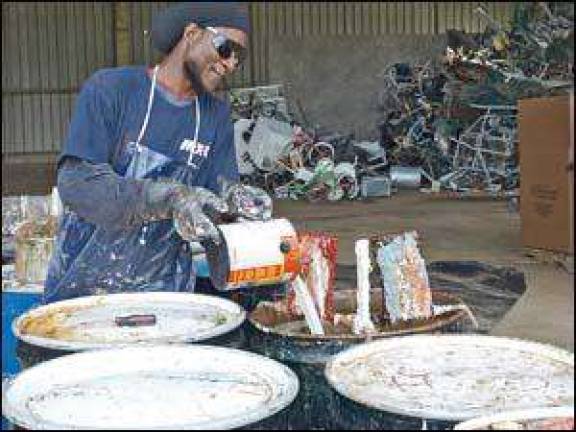Waste not, want not and don't pollute either

Lafayette Looking at it from a hazardous waste angle, Sussex County became a better place to live Saturday due to the Sussex County Municipal Utilities Authority Hazardous Household Waste collection day. “This has been a very productive event with over 800 cars dropping off waste products so far,” said Reenee Casapulla, Recycling Coordinator. “Residents have come to expect this event and plan on bringing in their material. The most common materials are pesticides, pool chemicals and oil based paints and solvents. We also get a lot of fluorescent light bulbs,” she said. “The oil based products can be put to beneficial re-use,” said Ron Potter of MXI Environmental Services. “The products are used as fuel in a cement kiln as part of the cement manufacturing process. The metal from the containers is also recycled.” A growing mound of fluorescent bulbs stood off to one side of the unloading area. “The bulbs are opened in an area that allows the mercury vapor to be captured and the glass tube and metal end connectors go on to be recycled,” said Potter. Sussex County must have the highest concentration of shutterbugs because recycling professionals say that residents bring in a lot of photo products. “I have consistently seen more photographic developing chemicals come out of Sussex County than any other location that we service,” said Potter. What about unknowns? Any unmarked containers brought in are put aside for testing. “A simple pH test with litmus paper will tell us if the mystery product is an acid or a base,” said Herb Hyde of Langhorn, Pa. He’s a field chemist with MXI. “Most cleaning products are either acids or bases.” The products are neutralized and transported for further processing. MXI has a waste facility in Abington, Va. Don’t miss out The next household hazardous waste collection day is Nov. 7 at the SCMUA site in Lafayette. For information on this and other services, go to www.scmua.org. How much? 21.11 tons; 42,220 pounds collected (typical: 18 tons; 36,000 pounds) 960 participants (typical: 500 to 700 participants)